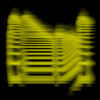| Author
|
Dynamic Range
|
wirakocha
IsraTrance Full Member

Started Topics :
112
Posts :
288
Posted : Oct 13, 2015 00:36:12
|
|
killik
IsraTrance Junior Member

Started Topics :
29
Posts :
186
Posted : Oct 13, 2015 00:15
|
if i understand that correctly, the site basicly measures how much life has been compressed out of the track.
good = plenty of dynamics, not very loud
bad = compressed and loud as hell.
to answer your question: just dont compress and/or limit your track so much and there u have ur "good".
        :O! :O!
http://soundcloud.com/killik |

|
|
routingwithin
IsraTrance Junior Member

Started Topics :
46
Posts :
204
Posted : Oct 13, 2015 11:51
|
Not quite.
It will also depend on the content of your track and the db levels of everything. Leaving compression out completely ain't what I would suggest.
TBH, when you limit your track in the end to 0db - imo, 6db DR is fine. I never go more than 2db reduction on the limiter. This usually leaves me between 5-7db DR.
Just note this is irrelevant really. Astral Projection ain't good because of their DR, lol, and having less than that ain't gonna make your track suck.
cheers
        " We are together in this matter you and I, closer to death, yes, closer than i'd like. How do you feel? - There can be no division in our actions, or everything is lost. What affects you affects me. " " We are together in this matter you and I, closer to death, yes, closer than i'd like. How do you feel? - There can be no division in our actions, or everything is lost. What affects you affects me. " |

|
|
frisbeehead
IsraTrance Junior Member
Started Topics :
10
Posts :
1352
Posted : Oct 13, 2015 15:06
|
It's a little more complicated then that.
Don't know exactly what calculations they're doing here, but I'm sure they're much better then their classification system: this good and bad thing is both simplistic and arbitrary in nature. Then, who gets to decide?
All this considerations depend on the context. You see, the line between right and wrong, good and bad, really depends on the context. On the kind of material you're doing. There's no universal truth, no automatic good and bad.
I suggest you take your time actually reading about it. There's plenty of loudness measurement systems out there. Some of it is more aimed at broadcast, film, tv and other media then music for sure, but the knowledge you get by reading on this will help you make good decisions when dealing with your stuff. So that's good!
Trusting some guy who probably hates all electronic music known to man and feels that music has only got worse and worse from those glorious times of his youth (replace with the genre this world renowned authority happens to enjoy/love). Not suggesting they're not good at what they do or that they don't know what they're talking about - they do. It's just that their perspective does not suit every situation known to man.
And every music festival this summer is a blatant testament to that fact. Just think about it.
|

|
|
frisbeehead
IsraTrance Junior Member
Started Topics :
10
Posts :
1352
Posted : Oct 13, 2015 15:46
|
@rountingwithin
Setting your ceiling at exactly 0dBFS can cause problems. When the audio gets converted from digital to analogue, there might still be overs - aka true peaks or inter sample peaks; so it's common practice to set your ceiling a little lower so as to compensate for that.
Two other things help: oversampling and look-ahead 
Limiters are not the way to introduce huge amounts of loudness into the material. If and when you need to dig deep with a limiter to get the loudness you hear on other (reference) material, then this just means you should go back. |

|
|
wirakocha
IsraTrance Full Member

Started Topics :
112
Posts :
288
Posted : Oct 13, 2015 22:00
|
Sound on sound magazine make a test for the listeners the result was, Listeners don’t care about “loudness”
the test was made with the difference of 0db,-3db,-6db
songs with a DR around to 12
sound better than others – MUCH better in some cases. Some have more impact, more space, more clarity, more punch.
songs with less DR around to 6 ,sound blunted, squashed, restricted and constricted – distorted, fuzzy and mushy.
good article here comparing the sh@#
http://productionadvice.co.uk/loudness-war-infographic/
quote take from Mixing and mastering in the box by steve savage
Finding your aesthetic perspective
From an aesthetic point of view, the cumulative effect of compression
might be considered the element that binds all the pieces together, that
makes the track “gel” and “sound like a record,” as opposed to a less
“finished” demo. It does this at the expense of a certain rawness, a
“natural” quality, and a broader musical expressiveness that are a result
of musical dynamics. The trade-off between impact and expression when
using compression reflects the aesthetic balance that recordists wrestle
with in creative mixing.
Like many recordists, I mix in a variety of genres, and I find that
some artists respond very negatively to the cumulative effects of compression
and some very positively.
Typically this is genre-based—roots musicians and chamber musicians may
dislike the cumulative effects of compression while contemporary pop, rock, and hip-hop musicians may love it.
On the other hand, you may discover the opposite to be true. It would
be very rare for me to mix anything without any compression—I think it’s
an almost essential element in transforming a live music environment into
a recorded environment—but the extent of compression represents a
critical aesthetic choice.
        d(((+_-)))b d(((+_-)))b
"Washuma" means Mescaline
FB: https://www.facebook.com/washumamusic
SCloud: https://soundcloud.com/washumamusic |

|
|
wirakocha
IsraTrance Full Member

Started Topics :
112
Posts :
288
Posted : Oct 15, 2015 22:06
|
|
frisbeehead
IsraTrance Junior Member
Started Topics :
10
Posts :
1352
Posted : Oct 18, 2015 20:57
|
Quote:
|
On 2015-10-13 22:00, wirakocha wrote:
songs with less DR around to 6 ,sound blunted, squashed, restricted and constricted – distorted, fuzzy and mushy.
|
|
we should all just quit what we're doing and start making music like people make sound for movies. sound quality would go through the roof.
|

|
|
wirakocha
IsraTrance Full Member

Started Topics :
112
Posts :
288
Posted : Oct 20, 2015 21:37
|
|
knocz
Moderator

Started Topics :
40
Posts :
1151
Posted : Oct 21, 2015 18:58
|
Quote:
|
On 2015-10-20 21:37, wirakocha wrote:
be carefull with the mastering stage cuz in this stage you can kill all your dynamics,like 90% of the trance productions in those days...
|
|
 if 90% of all trance productions are like this, then it becomes the norm, and anything that hasn't had it's dynamics compressed right out of it isn't trance if 90% of all trance productions are like this, then it becomes the norm, and anything that hasn't had it's dynamics compressed right out of it isn't trance 
Then, even if I try to have a big dynamic range, like the 40 dbs in classical music, when I play it at a party the whole PA is setup for the normal lifeless music - so my tune will relatively be way lower in comparison  It would just be a matter of lifting the PA gain a bit, but normally I don't see stage technicians in psytrance parties - the PA is setup pretty much after it arrives and is assembled together by whoever is available, and no one touches it again until it's time to take it down (or when the sound suddenly dies..) It would just be a matter of lifting the PA gain a bit, but normally I don't see stage technicians in psytrance parties - the PA is setup pretty much after it arrives and is assembled together by whoever is available, and no one touches it again until it's time to take it down (or when the sound suddenly dies..) 
I just hope one day all this changes. But for that to happen, it would need to happen on the mastering level - where the mastering engineer would refuse to take the life out of a tune or to master an already-lifeless tune
(but they need work and money to live, and unfortunately cant take the luxury of declining job opportunities..).
What I do have to say on the topic is, darn early psytrance from the 1980's didn't care about this. Apparently, neither in the 90's. And there are tons of devotees (me included) who abide by these years as "the golden years" (not to confuse with gold rays from the 00's  ). In the end we want to have fun, we want to get tripped out, we want to travel and trip balls. We want to be in trance. ). In the end we want to have fun, we want to get tripped out, we want to travel and trip balls. We want to be in trance.
Make music not (loudness) war 
        Super Banana Sauce http://www.soundcloud.com/knocz Super Banana Sauce http://www.soundcloud.com/knocz |

|
|
frisbeehead
IsraTrance Junior Member
Started Topics :
10
Posts :
1352
Posted : Oct 22, 2015 14:16
|
Quote:
|
On 2015-10-21 18:58, knocz wrote:
 if 90% of all trance productions are like this, then it becomes the norm, and anything that hasn't had it's dynamics compressed right out of it isn't trance if 90% of all trance productions are like this, then it becomes the norm, and anything that hasn't had it's dynamics compressed right out of it isn't trance 
|
|
Exactly!
But I wouldn't even go as far as to say the music playing on festivals and (good!) releases is sounding lifeless, with clear signs of over compression or anything like that.
When it happens though, it's probably not the mastering engineer's fault? Potential for loudness starts with the mix itself.
If a client is highly competent, then there's no problem at all. If the client is not, does not take advise easily, does not show any interest in getting his mix redone (let alone pay for it) and still wants to sound as loud as the norm, then whose fault is it?
It's the same deal with Graphics Design and everything else that involves dealing with clients and their expectations. It's very hard to tell a client he's the one to blame for the lack of quality, right?
|

|
|
Colin OOOD
Moderator

Started Topics :
95
Posts :
5380
Posted : Oct 22, 2015 17:06
|
|
Upavas
Upavas

Started Topics :
150
Posts :
3315
Posted : Oct 29, 2015 21:42
|
|
routingwithin
IsraTrance Junior Member

Started Topics :
46
Posts :
204
Posted : Dec 11, 2015 14:38
|
People should rather render individual channels and give them to the mastering engineer to mix as well as master, cause even though you take the advice of leaving -6db headroom for mastering, the dynamic range would still be what it is if he takes it up to 0db, o sorry, -0.3db. IMO the mixing stage is the main area where dynamics are set.
        " We are together in this matter you and I, closer to death, yes, closer than i'd like. How do you feel? - There can be no division in our actions, or everything is lost. What affects you affects me. " " We are together in this matter you and I, closer to death, yes, closer than i'd like. How do you feel? - There can be no division in our actions, or everything is lost. What affects you affects me. " |

|
|
Colin OOOD
Moderator

Started Topics :
95
Posts :
5380
Posted : Dec 11, 2015 22:22
|
Quote:
|
On 2015-12-11 14:38, routingwithin wrote:
People should rather render individual channels and give them to the mastering engineer to mix as well as master, cause even though you take the advice of leaving -6db headroom for mastering, the dynamic range would still be what it is if he takes it up to 0db, o sorry, -0.3db. IMO the mixing stage is the main area where dynamics are set.
|
|
I really enjoy mixing people's music but think one reason why fewer people ask for that service is because it's inevitably a much longer job involving more creative decisions, and is therefore inevitably more expensive!
Completely agree with your point about "the mixing stage being the main area where dynamics are set", although there are obviously tools and techniques available to reduce it and even to help increase DR if the mix has too little.
        Mastering - http://mastering.OOOD.net :: www.is.gd/mastering Mastering - http://mastering.OOOD.net :: www.is.gd/mastering
OOOD 5th album 'You Think You Are' - www.is.gd/tobuyoood :: www.OOOD.net
www.facebook.com/OOOD.music :: www.soundcloud.com/oood
Contact for bookings/mastering - colin@oood.net |

|
|
|